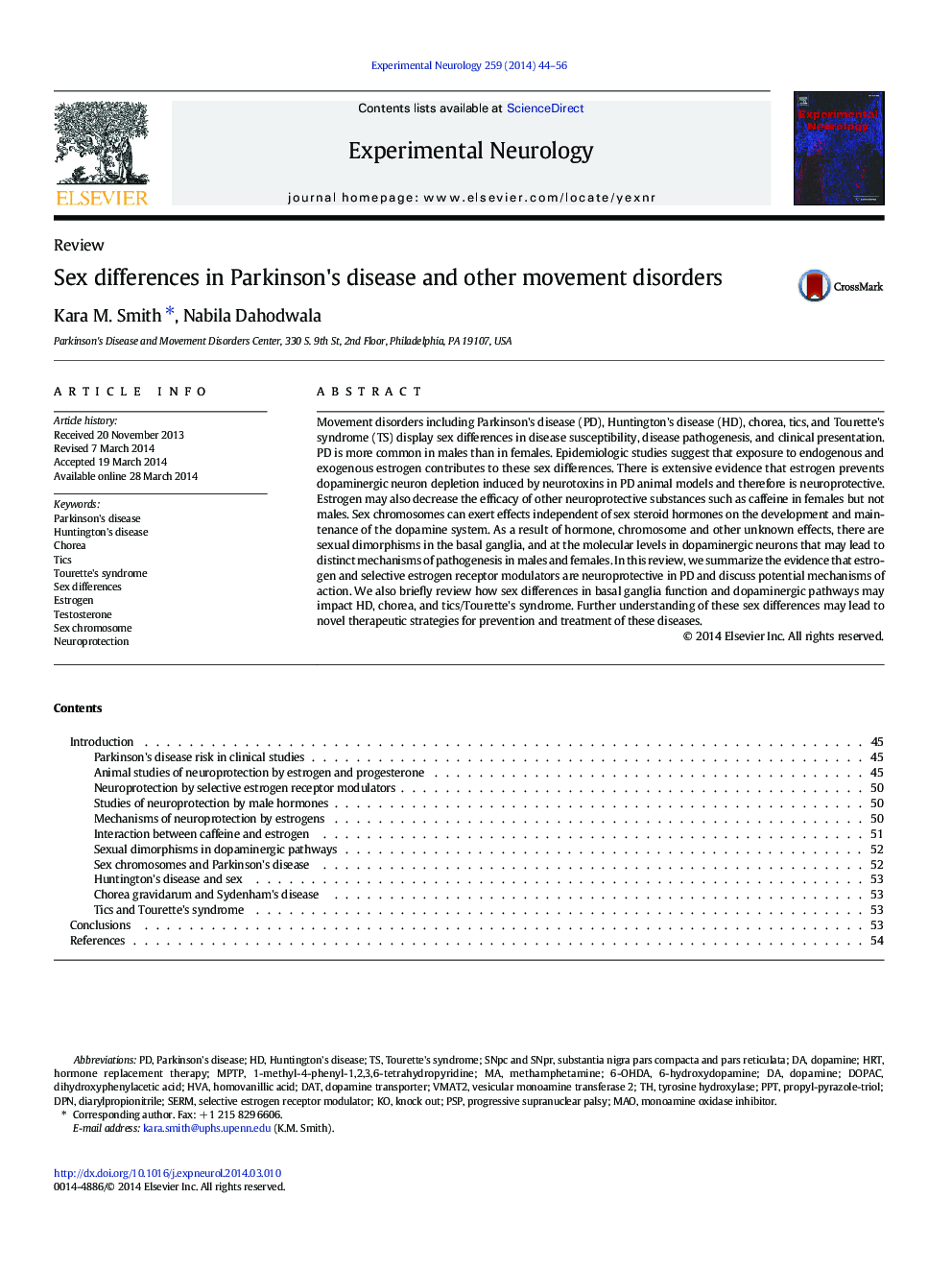| کد مقاله | کد نشریه | سال انتشار | مقاله انگلیسی | نسخه تمام متن |
|---|---|---|---|---|
| 3055477 | 1580173 | 2014 | 13 صفحه PDF | دانلود رایگان |
• Estrogen helps maintain the dopaminergic neuron population in the basal ganglia.
• Estrogen and related compounds are neuroprotective in toxin-mediated animal models of Parkinson’s disease.
• Estrogen’s neuroprotective effects are at least partially mediated by estrogen receptors, specifically ERa.
• Caffeine lowers risk of PD in males more than females, and estrogen may limit caffeine’s neuroprotective effect in females.
• Both the X and Y chromosomes may independently contribute to the development of dopaminergic pathways.
• In tics and Tourette’s syndrome, modulation of the androgen system in males may improve symptoms.
Movement disorders including Parkinson's disease (PD), Huntington's disease (HD), chorea, tics, and Tourette's syndrome (TS) display sex differences in disease susceptibility, disease pathogenesis, and clinical presentation. PD is more common in males than in females. Epidemiologic studies suggest that exposure to endogenous and exogenous estrogen contributes to these sex differences. There is extensive evidence that estrogen prevents dopaminergic neuron depletion induced by neurotoxins in PD animal models and therefore is neuroprotective. Estrogen may also decrease the efficacy of other neuroprotective substances such as caffeine in females but not males. Sex chromosomes can exert effects independent of sex steroid hormones on the development and maintenance of the dopamine system. As a result of hormone, chromosome and other unknown effects, there are sexual dimorphisms in the basal ganglia, and at the molecular levels in dopaminergic neurons that may lead to distinct mechanisms of pathogenesis in males and females. In this review, we summarize the evidence that estrogen and selective estrogen receptor modulators are neuroprotective in PD and discuss potential mechanisms of action. We also briefly review how sex differences in basal ganglia function and dopaminergic pathways may impact HD, chorea, and tics/Tourette's syndrome. Further understanding of these sex differences may lead to novel therapeutic strategies for prevention and treatment of these diseases.
Journal: Experimental Neurology - Volume 259, September 2014, Pages 44–56
